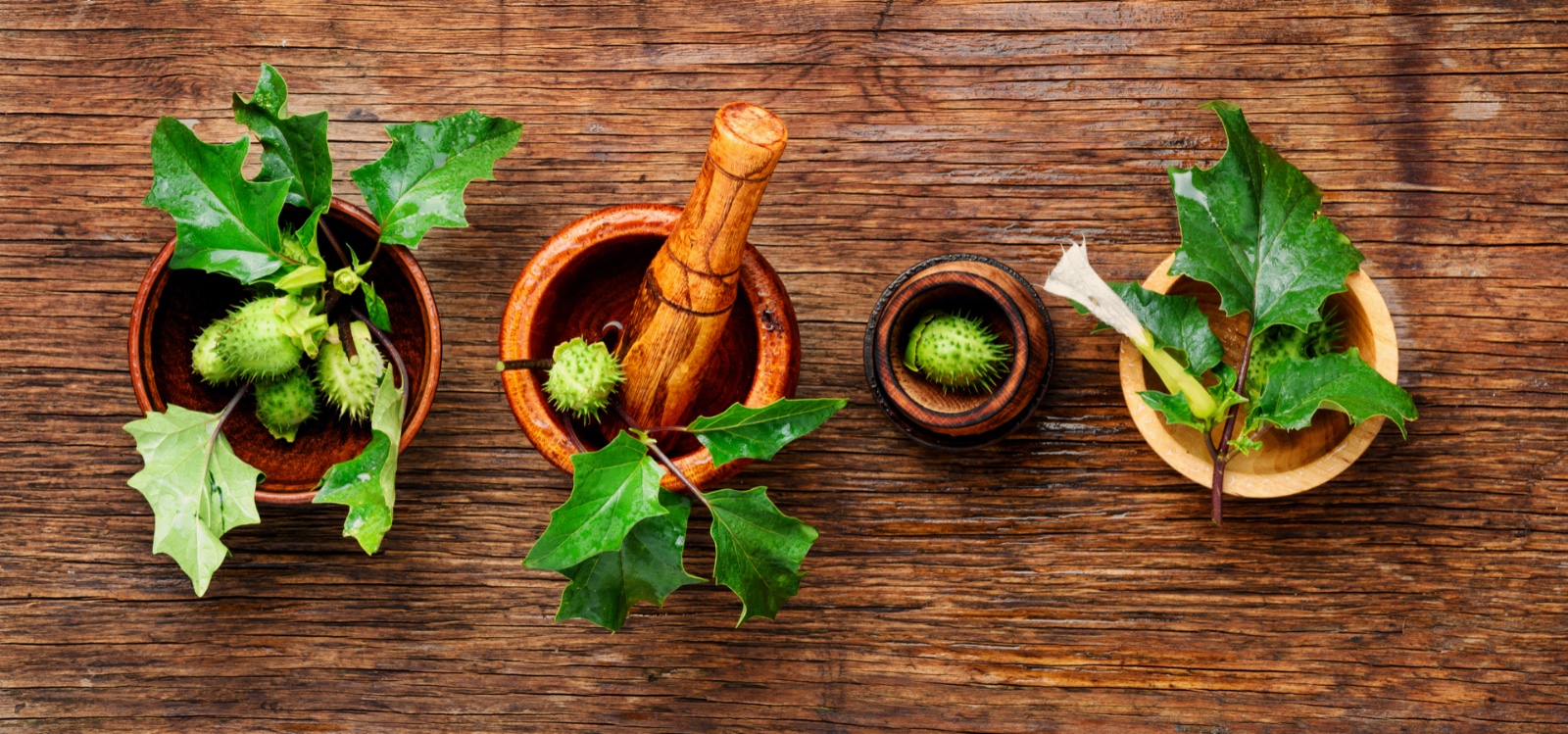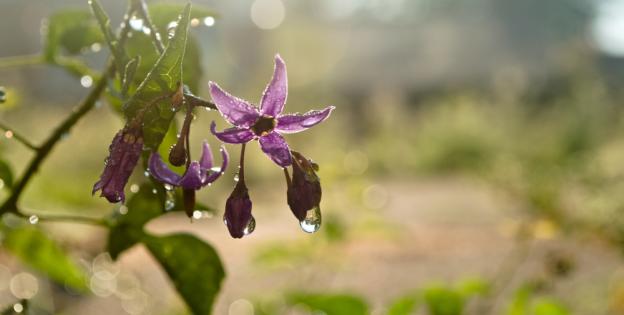- Jimsonweed is one of the most hallucinogenic plants in the plant kingdom.
- Belonging to the Solanaceae family, it has been used since ancient times for its psychotropic and medicinal properties.
- Indigenous peoples used it to lift the mood, ease stress and induce visions for healing purposes.

What is Jimsonweed?
Jimsonweed (Datura Stramonium) is an annual plant belonging to the Solanaceae family. Also known as thorn apple, devil's snare, Beelzebub's twinkie and stink weed, some of these names may give you an idea of why animals avoid eating this plant. Possibly native to Mexico, nowadays jimsonweed grows in all temperate regions of the world.
What does jimsonweed look like?
Jimsonweed grows to over 1 metre in length, producing a cylindrical stem with serrated, petiolate leaves and white, beautifully trumpet-shaped flowers. The fruits are spiky green capsules that reveal dark brown seeds when they split. These germinate easily in nitrogen-rich soils in temperate climates, with the plant flowering over the summer.
Toxicity
Jimsonweed is a highly toxic plant, to the point it can cause death if taken in high doses. While it has been traditionally used by indigenous peoples for a variety of purposes, people who are not absolutely familiar with the plant should avoid using it recreationally, as it can cause major reactions and even death.

Jimsonweed produces tropane alkaloids including hyoscyamine, scopolamine and atropine. These are highly psychoactive substances with neurotoxic effects such as hallucinations, mydriasis, hyperthermia, seizures and tachycardia – even paralysis and coma if poisoning is severe. The alkaloids are mostly found in the seeds, only five to six grams being necessary to deliver a lethal dose.
Medicinal uses
Given its high toxicity, jimsonweed is not widely used in medicine. Because the alkaloid content varies from plant to plant, doses are hard to calculate, with the added risk that an overdose can have lethal effects. Formerly used to treat asthma, stomach spasms and epilepsy, nowadays it is mostly used as a topical analgesic and anaesthetic.
Spirituality, witches and zombies
Due to its hallucinatory effect, many civilisations throughout history have attributed magical properties to jimsonweed, which has been widely used in rituals and celebrations from vastly different cultures and times.
In the Middle Ages, for instance, jimsonweed was one of the main ingredients in the concoctions prepared by witches to 'fly', while in Ancient Rome, the female followers of Bacchus (the god of dance and wine) achieved trance state with the aid of the plant during their rituals. Also, there are evidences that the priests that practiced voodoo and black magic in Haiti used potions containing jimsonweed to 'create' zombies.





Comments from our readers
There are no comments yet. Would you like to be the first?
Leave a comment!Did you like this post?
Your opinion about our seeds is very important to us and can help other users a lot (your email address won't be made public).